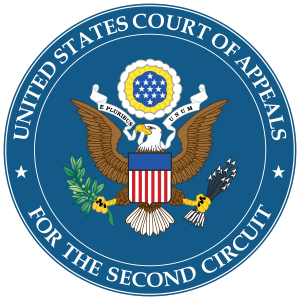 Late in June, the U.S. Supreme Court issued a decision in Liu v. SEC, a closely watched case in which the Court in an 8-1 opinion curtailed the authority of the Securities and Exchange Commission (SEC) to seek disgorgement of profits from private parties in judicial enforcement proceedings. The Court articulated restrictions on the SEC’s disgorgement power, including (1) limiting disgorgement amounts to the net profits from wrongdoing, (2) limiting the SEC’s ability to seek disgorgement of profits on a joint and several basis, and (3) directing the SEC to return disgorged monies to aggrieved investors rather than depositing them in the U.S. Treasury. Although it does not address insurance issues directly, the Court’s analysis of the disgorgement remedy is bound to revive discussion of the issue of insurability of losses suffered as a result of settlements or judgments characterized as disgorgement.
Late in June, the U.S. Supreme Court issued a decision in Liu v. SEC, a closely watched case in which the Court in an 8-1 opinion curtailed the authority of the Securities and Exchange Commission (SEC) to seek disgorgement of profits from private parties in judicial enforcement proceedings. The Court articulated restrictions on the SEC’s disgorgement power, including (1) limiting disgorgement amounts to the net profits from wrongdoing, (2) limiting the SEC’s ability to seek disgorgement of profits on a joint and several basis, and (3) directing the SEC to return disgorged monies to aggrieved investors rather than depositing them in the U.S. Treasury. Although it does not address insurance issues directly, the Court’s analysis of the disgorgement remedy is bound to revive discussion of the issue of insurability of losses suffered as a result of settlements or judgments characterized as disgorgement.
Articles Posted in D&O
Insurance Coverage for Forced Labor Liability
 Times of crisis can bring out the best in people. Unfortunately, times like this can also be an opportunity for exploitation of inexpensive, and potentially forced, labor. As America reopens its economy, it is likely that we will begin to see a surge in many industries. The resulting demand for labor, coupled with unprecedented unemployment and related desperation not only in America, but worldwide, could lead unscrupulous individuals and companies to exploit American and foreign workers. We saw this with previous disasters, such as Hurricane Katrina, where foreign laborers were exploited in the rebuilding process with false promises of citizenship. Now, to be clear, exploitation occurs even during times of economic prosperity; however, it can be even more pronounced and egregious when people must deal with uncertainties and hardships never before experienced in their lifetimes.
Times of crisis can bring out the best in people. Unfortunately, times like this can also be an opportunity for exploitation of inexpensive, and potentially forced, labor. As America reopens its economy, it is likely that we will begin to see a surge in many industries. The resulting demand for labor, coupled with unprecedented unemployment and related desperation not only in America, but worldwide, could lead unscrupulous individuals and companies to exploit American and foreign workers. We saw this with previous disasters, such as Hurricane Katrina, where foreign laborers were exploited in the rebuilding process with false promises of citizenship. Now, to be clear, exploitation occurs even during times of economic prosperity; however, it can be even more pronounced and egregious when people must deal with uncertainties and hardships never before experienced in their lifetimes.
The Paycheck Protection Program (PPP) and D&O Coverage
Contractual Liability Exclusion Excised from E&O Policy for Professional Services Company
In an important decision in the world of professional liability (including D&O and E&O policies), the Seventh Circuit recently held that a “contractual liability” exclusion—i.e., an exclusion for claims “based upon or arising out of … breach of contract”—when inserted in a professional liability policy, that is, a policy intended to insure professionals for services they perform under contract, renders the coverage “illusory.” Accordingly, the appeals court held that the policy must be “reformed” to meet the policyholder’s “reasonable expectations” that coverage would be afforded for claims by clients for errors and omissions in the performance of professional services under contract, and remanded the case to the district court to apply those reasonable expectations in the pending dispute. (See Crum & Forster Specialty Insur. Co. v. DVO, Inc., No. 18-2571 (7th Cir., Sept. 23, 2019), opinion here.)
Delaware Court Adopts Pillsbury’s Theories on Novel D&O Insurance Issues (Part 2)
 In a prior post, we reported an important ruling of first impression by the Delaware Superior Court that a shareholder appraisal action against Pillsbury’s client Solera Holdings Inc. was a “Securities Claim” under Solera’s directors and officers liability insurance policies. In the same decision, the court ruled on two additional issues that no Delaware court had previously decided and that highlight the importance of understanding the specific terms of your company’s D&O policies.
In a prior post, we reported an important ruling of first impression by the Delaware Superior Court that a shareholder appraisal action against Pillsbury’s client Solera Holdings Inc. was a “Securities Claim” under Solera’s directors and officers liability insurance policies. In the same decision, the court ruled on two additional issues that no Delaware court had previously decided and that highlight the importance of understanding the specific terms of your company’s D&O policies.
Federal Appeals Court Punishes Policyholder for Giving Too Much Notice
 When a company receives a claim or lawsuit, it is critical to provide timely notice to its insurers. But when the claim is first made, sufficient facts may not yet be known to indicate which policy will respond. Many policies also contain language that purports to shift coverage to earlier insurance policies for claims that “relate back” to earlier events. As a best practice, policyholders and their brokers often provide notice of a claim under all policies that might cover a loss, to ensure that coverage is not defeated by failure to meet any obligation to give notice. This method of first providing notice for claims to multiple insurers, and then working with insurers to determine the correct policy to respond, is a well-established practice for managing insurance claims. Once the proper policy to respond to the claim is established, exclusions in the other policies kick in to avoid double coverage.
When a company receives a claim or lawsuit, it is critical to provide timely notice to its insurers. But when the claim is first made, sufficient facts may not yet be known to indicate which policy will respond. Many policies also contain language that purports to shift coverage to earlier insurance policies for claims that “relate back” to earlier events. As a best practice, policyholders and their brokers often provide notice of a claim under all policies that might cover a loss, to ensure that coverage is not defeated by failure to meet any obligation to give notice. This method of first providing notice for claims to multiple insurers, and then working with insurers to determine the correct policy to respond, is a well-established practice for managing insurance claims. Once the proper policy to respond to the claim is established, exclusions in the other policies kick in to avoid double coverage.
Delaware Court Adopts Pillsbury Theory that Shareholder Appraisal Actions Are Covered Securities Claims Under D&O Policies
 Pillsbury secured an important victory for its client, Solera Holdings Inc., when Delaware Superior Court Judge Abigail LeGrow held—in a matter of first impression anywhere in the country—that a shareholder appraisal action challenging the price Solera obtained for its shares when it sold itself to private equity firm Vista Equity Partners was a “Securities Claim” within the meaning of Solera’s directors and officers liability insurance policies. Last month’s groundbreaking decision in Solera Holdings, Inc. v. XL Specialty Ins. Co., may be found here.
Pillsbury secured an important victory for its client, Solera Holdings Inc., when Delaware Superior Court Judge Abigail LeGrow held—in a matter of first impression anywhere in the country—that a shareholder appraisal action challenging the price Solera obtained for its shares when it sold itself to private equity firm Vista Equity Partners was a “Securities Claim” within the meaning of Solera’s directors and officers liability insurance policies. Last month’s groundbreaking decision in Solera Holdings, Inc. v. XL Specialty Ins. Co., may be found here.
The Private Vs. Public D&O Insurance Form: Important Considerations for Companies Looking to Avoid Growing Pains
 Although it has become common for corporate directors and officers to face claims seeking to hold them personally liable for alleged damages resulting from actions taken in their official capacity, it wasn’t always this way. There was a time when such lawsuits were so rare that corporations were not even allowed to indemnify their directors and officers. But with the emergence and rapid growth of lawsuits against officers and directors—often fueled by a cottage industry of class action plaintiffs’ firms—corporate indemnification and Directors & Officers (D&O) liability insurance programs have become integral to a company’s ability to attract and retain strong management.
Although it has become common for corporate directors and officers to face claims seeking to hold them personally liable for alleged damages resulting from actions taken in their official capacity, it wasn’t always this way. There was a time when such lawsuits were so rare that corporations were not even allowed to indemnify their directors and officers. But with the emergence and rapid growth of lawsuits against officers and directors—often fueled by a cottage industry of class action plaintiffs’ firms—corporate indemnification and Directors & Officers (D&O) liability insurance programs have become integral to a company’s ability to attract and retain strong management.
Second Circuit Misinterprets D&O Policy Warranty Letter
 When adding new or additional layers to an insurance program, policyholders are often asked to sign a “warranty letter” providing comfort to the prospective insurer that the policyholder is not aware of impending claims. Typical warranty letters include both subjective and objective representations, indicating that the policyholder has both no actual (or subjective) knowledge of any impending claims and no reasonable (or objective) expectation that such a claim will arise. If a claim later arises, these warranties may provide a basis for full rescission of a policy or create an exclusion for claims that the policyholder knew or should have known would be filed. And when a warranty is poorly worded or overly broad, it may give rise to a morass of coverage litigation.
When adding new or additional layers to an insurance program, policyholders are often asked to sign a “warranty letter” providing comfort to the prospective insurer that the policyholder is not aware of impending claims. Typical warranty letters include both subjective and objective representations, indicating that the policyholder has both no actual (or subjective) knowledge of any impending claims and no reasonable (or objective) expectation that such a claim will arise. If a claim later arises, these warranties may provide a basis for full rescission of a policy or create an exclusion for claims that the policyholder knew or should have known would be filed. And when a warranty is poorly worded or overly broad, it may give rise to a morass of coverage litigation.
Allocation Clauses in D&O and E&O Policies – Traps for the Unwary
Some of the biggest pitfalls for policyholders lie camouflaged among seemingly “standard” policy conditions—often overlooked during the procurement or renewal process. This is especially true of allocation clauses, found most commonly in Directors & Officers (D&O), Errors & Omissions (E&O), and Professional Liability (PL) policies. In our policyholder-side coverage practice, we are seeing insurers relying on these clauses more and more as an excuse to pay only a small fraction of the defense in mixed-claim cases, i.e., suits involving both clearly covered claims and claims that the insurer contends are not covered. We urge policyholders and brokers to review such clauses carefully and seek to modify them as necessary to ensure the complete defense to which the policyholder is entitled under the law.
allocation clauses, found most commonly in Directors & Officers (D&O), Errors & Omissions (E&O), and Professional Liability (PL) policies. In our policyholder-side coverage practice, we are seeing insurers relying on these clauses more and more as an excuse to pay only a small fraction of the defense in mixed-claim cases, i.e., suits involving both clearly covered claims and claims that the insurer contends are not covered. We urge policyholders and brokers to review such clauses carefully and seek to modify them as necessary to ensure the complete defense to which the policyholder is entitled under the law.
 Policyholder Pulse
Policyholder Pulse


